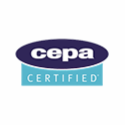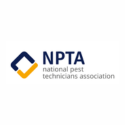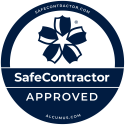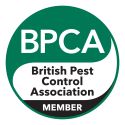How can I get rid of moths? If you suspect you have a moth problem, don’t worry, most moths found in the UK are harmless. However, some moths are considered pests because they can damage property such as clothes and carpets or infest certain foods.
If you find holes in your clothes or carpets, detect damage to food packaging and products, or notice a lot of moths flying around your property, then contact us, as you may have a moth infestation.
The Common Clothes Moth (Tineola Bisselliella) is the cloth eating culprit. It can be identified by its bronze wings with black flecks. The adult can grow up to 18mm long and prefers to run rather than fly. The clothes moth infestation starts with the female moth laying her eggs among the fibres. It is the hatched larvae that then does the damage. They spin silk webbing into a tunnel within the material and begin to eat the fibres. This causes the holes. The larvae will feed on wool, cashmere, silk, hair and cotton. They can cause extensive damage to items made from these materials, such as clothes, carpets, blankets and soft furnishings.
Understanding the clothes moth lifecycle is crucial for effective control:
The two most common ‘food moths’ are the Indian-Meal Moth (Plodia Interpunctella) and the White-Shouldered House Moth (Endrosis Sarcitrella). They are known as ‘stored product pests’.
The Indian-Meal Moth is most easily seen when it is flying around, however this is when the damage has been done and the moth has reached adulthood. Just like the Clothes Moth, it is the larvae that does the damage. It can penetrate packaging materials, such as paper, cellophane and polythene to live within the food source, such as flour, biscuits and cereal. Once fully grown, the larvae may be spotted climbing walls, ceilings or inside cupboards as they move away from the food source to spin their white silken cocoons.
The White-Shouldered House Moth will thrive in animal hair and even fluff in central heating ducts and radiators. It may even be found in clothing and carpets like the Clothes Moth. Then, just like the Indian-Meal Moth, it will also infect stored food.
All the Protex Pest Control Technicians are qualified to the stringent standards laid down by the British Pest Control Association (BPCA).
When you contact us, we will arrange a time slot for one of our Protex Pest Control experts to visit you. They will thoroughly assess your premises to seek out the egg, larvae and pupae and provide you with a personalised moth treatment plan.
We will also provide you with advice on how to prevent further moth infestations in the future.
Watch our video about how to prevent moths from damaging your clothes here.
You may find DIY remedies online to get rid of a moth problem yourself. However, they are not always effective. It is always best to seek the advice of a professional pest control company who will tackle the root cause of the problem, which is the eggs and larvae. Just getting rid of the moths flying around will not solve the problem if more eggs have been laid.
Don’t let clothes moths devour your wardrobe.






